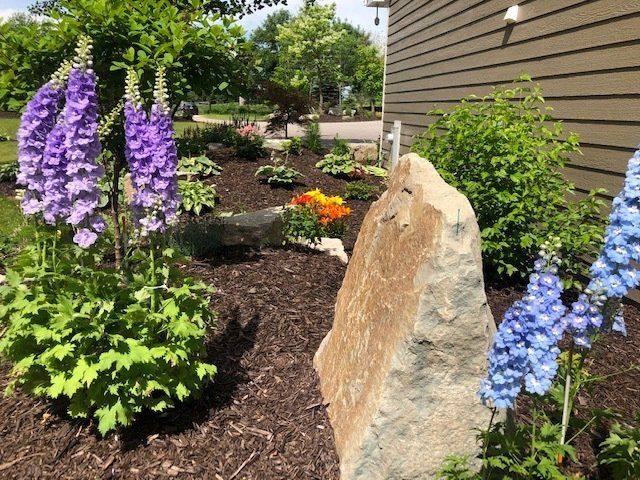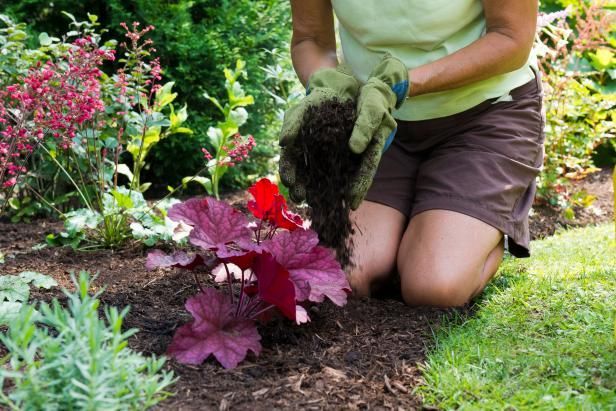By 7062721248
•
April 13, 2023
Mulch offers multiple decorative and practical benefits -- making mistakes when mulching can keep your soil from reaping benefits such as conserving moisture, suppressing weeds, reducing erosion and decreasing water runoff. What Does Mulch Do? Here are several ways mulch works in your landscaping: Keeps the weeds down and makes them easier to remove Slows evaporation of water, saving time on watering your plants and money, too Insulates the soil, protecting plants from extreme temperatures Gives beds a finished, polished look So, it's important to get your mulching right. Here's what landscape designers and researchers say are the best tips for how to mulch a yard. 1. Do Use Mulch as an Accent Mulching can help create healthy lawns but also has an aesthetic value. Choose colored mulch that complements the exterior colors of your home in the brick, stone, stucco and siding. For example, brownish/red pine mulch goes well with brick houses, says Jeremy Becker, owner of FireFly Landscapes in Kansas City. Using a dark mulch can contrast with flowers, improving your landscape design. Mulch also can be used to enhance your landscape theme and setting. 2. Do Look at Your Entire Landscape Consider using stone and mulch to create definition and interest in your landscaping project. 3. Do Clean It Out If re-mulching a bed, remove some of the old mulch, Becker says. Sometimes mulch has been added to the beds three to four times, so he recommends taking out some of the mulch that has built up over time. 4. Do Tweak the Thickness When you get close to an edge, such as pavement, stepping stone or tree trunk, thin it out. “There’s no benefit in having a pile of mulch next to a tree truck. You want to taper it down,” Day says. 6. Don’t Ignore Bare Soil Researchers are finding mulching has significant environmental benefits. Having bare soil on your property will cause erosion and sediment runoff, Day says. Mulching can help control erosion. Research by Day and Virginia Tech graduate student David Mitchell found that bare soil lost about five times as much sediment as soils covered with mulch. 7. Don’t Use Too Little or Too Much Mulch About 3 inches of mulch is recommended for beds, and Becker recommends mulching twice a year. Mulching with the right amount each time will help fend off weeds and conserve moisture, which will reduce your need to irrigate. 8. Don’t Forget Your Trees Place mulch around the base to protect the trunk, especially if you have younger trees, Day says. Mulch rings makes a protective area to reduce threats from other plants and keep mowers away. 9. Don’t Assume You Need Something Underneath Some people may want to use plastic or geotextiles, such as landscape fabric, to separate certain mulches, such as inorganic stone mulch, from the soil, Day says. There’s a belief that black plastic will keep weeds down. But adding a layer of plastic or landscape fabric could cause more water runoff and keep your garden from having a clean, streamlined look. If you use an organic mulch that will break down, like shredded hardwood bark, avoid landscape fabric because you want the mulch to be in contact with the soil to improve it, Day says. Plastic or landscape fabric could prevent water and rain from reaching the soil, and actually could increase runoff. Weeds also could grow into the landscape fabric, she adds. If the mulch shifts around or is replaced, the plastic or landscape fabric could show through. “It looks hideous when you have plastic or landscape fabric being exposed under the mulch,” Day says. 10. Don’t Use Bad Mulch The biggest pitfall is getting your mulch from an unreliable source, Day says. For example, mulch could be delivered with noxious weed seeds in it because it was stockpiled next to a field of weeds. "You could be paying for that for a long time," she says. Source: https://www.hgtv.com/outdoors/landscaping-and-hardscaping/beds-and-mulch/10-mulch-dos-and-donts











